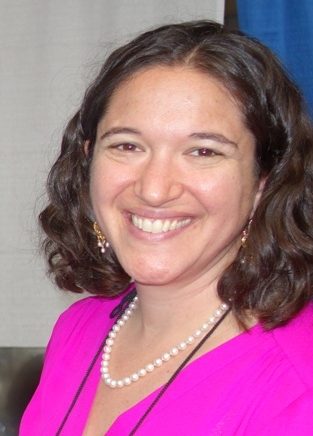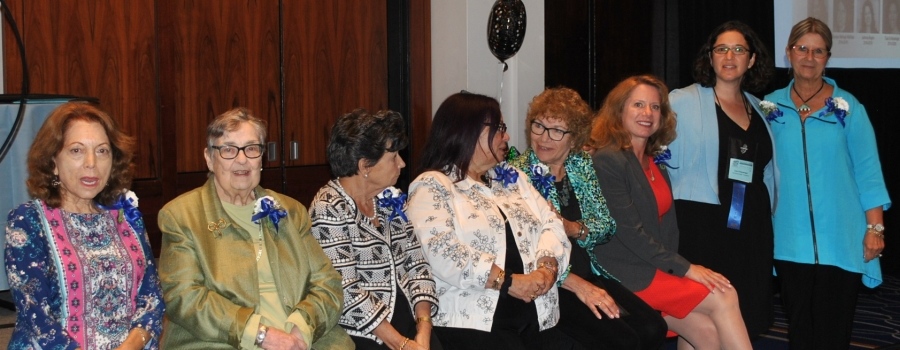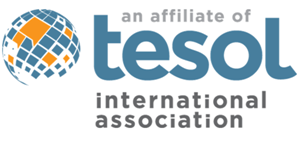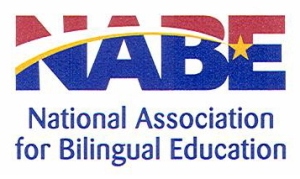NJ Teachers of English to Speakers of Other Languages/
NJ Bilingual Educators
ARTICLES
From the Editor: Roselyn Rauch- Hail and Farewell
President’s Message: Caia Schlesinger- Important Entrance and Exit Information
Vice-President: Maggie Churchill- Advocacy Lessons from Fred Carrigg
Past President: JoAnne Negrin- Dr. Alfredo Quiñones-Hinojosa at Spring Conference
Historian: Barbara Tedesco- The Presidency and the Creation of an Executive Board
Liaison to Affiliates: Leigh Ann Matthews- Getting to Know NJTESOL/NJBE Affiliates
Liaison to the Spring Conference Exhibitors: Tina Kern- Welcome to our World!
Representative-at-Large/ Liaison to Chapters and NJEA: Joyce Farr- Imagine A World…
Guest Contributor for Technology: Dale Egan- Quizlet and Kahoot Grab Students’ Attention
Guest Contributor: Jeffrey Linn- The Difference between Comprehending and Understanding
See our Special Interest Groups Pages for More about English Language Learners of All Ages
From the Editor
Hail and Farewell
By Roselyn Rauch
When I was working as an ESL (English as a Second Language) teacher in pull-out and push-in classroom settings and as an ESL district resource teacher, I cringed at what was being perpetrated on our bilingual and ESL students. They were being taught with the most developmentally inappropriate materials imaginable. Some programs were a “curriculum in a box program” meant for all students. Forget language acquisition theory for our subset of students. Since only test scores mattered, all teachers did their best to help get through the hurdles. I watched as bilingual and ESL students sat in mainstream classrooms and sat through the day not knowing what was going on around them; mainstream teachers had no language acquisition training. I went back to school and earned my Ed. D in just that; I wrote my dissertation on what mainstream teachers needed to know to help those bilingual/ESL kids sitting in their classes. I was vocal about what I would do when I retired: I would get on a soapbox and rail for developmentally appropriate curriculum and materials for these kids. One of my colleagues stuck her nose in the air and sniffed, “You’ll never do it.”
Well, here I am wearing the mantle of Editor of NJTESOL/NJBE Voices for over 10 plus years.
Certainly, it is not a soapbox, per se, but the voice of a professional, well-oiled organization that is now celebrating its 50th anniversary. NJTESOL/NJBE has been advocating and succeeding for the needs and rights of our bilingual and ESL kids. (I always felt that my students were my “kids” and treated them as such, being a strong believer in Maslow’s Hierarchy. I could watch it in action in my classes.)
Many changes have taken place both on the Federal and State levels over these past years. Bilingual and ESL students have finally been recognized. Programs and laws have changed, and are still evolving, to accommodate their academic needs.
NJTESOL/NJBE is a force to be reckoned with. It holds its own specialized mini-convention (ala NJEA* style) with vital workshops to be attended and vendors with specialized materials to be met.
And, I have been involved in it all: Vice Chair/Chair/Past Chair of the Bergen County Chapter (6 years); Elementary ESL Special Interest Group Representative; Editor of Voices; working at our *New Jersey Education Association booth in Atlantic City; and presenting at our Spring Conference and working with our vendors. I have done my part for these wonderful kids. This has been my soapbox.
I have met so many talented and well-informed people who have the same passion as I. I have learned so much from their experiences as I hope they have learned from me and the articles in Voices. But, like all things, an end must come at some point, so I am here saying that it is time for me to pass the mantle to someone else.
It has been an honor to have served. Thank you. Looking forward, Roselyn
President
Important Entrance and Exit Information You Need to Know
By Caia Schlesinger
 Please read below for important answers to recent posts on the NJTESOL/NJBE Hotlist.
Please read below for important answers to recent posts on the NJTESOL/NJBE Hotlist.
Currently, while the state of New Jersey is still in the transition period to ESSA (Every Student Succeeds Act), school districts may use the language proficiency tests on the NJDOE website to determine exit and entrance for ELLs (English language learners) as well as multiple measures. Note: The WIDA screener is ONLY used for entrance purposes.
The NJDOE (New Jersey Department of Education) will alert us when the transition to ESSA is complete. At that point, you will need to refer to the entrance and exit criteria in the NJ ESSA Plan (see below).
ENTRANCE (pages 380-383)
Entrance criteria on WIDA test A student can be eligible for entrance with a W-APT (Kindergarten ONLY), WIDA Screener, or WIDA MODEL composite proficiency level below 4.5. (See state-specific guidelines for Kindergarten under ‘Entry and Exit on WIDA MODEL for Kindergarten’).
Entrance criteria – multiple measures • Home language survey • Records review process
EXIT (pages 385-386)
Exit criteria on WIDA test
• The student took the ACCESS for ELLs 2.0 or WIDA MODEL and scored a composite proficiency level of 4.5 or higher or
• The student took the Alternate ACCESS and scored a composite proficiency level of A3 Engaging or higher.
Exit criteria – multiple measures
• English Language Observation Form
• Performance on achievement tests
• Reading level in English
Please take the time to read these sections of the NJ ESSA plan. More guidance will be coming from the NJDOE regarding special education, and standardization of the home language survey, entrance criteria, and exit criteria.
You can view the NJDOE’s presentation here from the 2018 NJTESOL/NJBE Spring Conference: State Initiatives in Bilingual/ESL Education
Remember, if you have any questions, you can always email the staff at the NJDOE Bureau of Bilingual/ESL Education at ell@doe.nj.gov
Caia Schlessinger, President, NJTESOL/NJBE; ESL Teacher, Highland Park School District cschlessinger@njtesol-njbe.org
Vice President
Advocacy Lessons from Fred Carrigg
By Maggie Churchill
 In the New York metro area, we are defined by our jobs. The first question following social introductions is typically, “So, what do you do?” When asked this question twenty years ago, I always had to explain exactly what teaching English as a Second Language (ESL) was. Not so today. In fact, I haven’t needed to spell out E-S-L in the last five years: progress, indeed!
In the New York metro area, we are defined by our jobs. The first question following social introductions is typically, “So, what do you do?” When asked this question twenty years ago, I always had to explain exactly what teaching English as a Second Language (ESL) was. Not so today. In fact, I haven’t needed to spell out E-S-L in the last five years: progress, indeed!
ESL as a teaching field is now commonplace, with certificates and degrees offered by thirteen New Jersey colleges and universities. With more than 72,000 English language learners (ELLs) in the state, and the fourth highest number of immigrant students in the country, it is almost impossible to imagine a time when our schools were without bilingual and ESL teachers and programs.
Nearly fifty years ago, a new teacher named Fred Carrigg stepped into his first classroom as a bilingual/ESL teacher at the Jefferson School in Union City, New Jersey. His forty-one students were recent arrivals on-board the Cuban Freedom Flights. Fred had a smorgasbord of classes: bilingual math, four ESL classes, and bilingual health for eighth-grade boys. With bilingual education as a brand new field, and only Montclair State College offering an ESL course sequence for teachers, qualified teachers were thin on the ground. State certification for bilingual/ESL didn’t even exist until 1976. There was a desperate need for teachers and schools ran programs for twenty years on emergency certifications.
Fred went on to a phenomenal career, chronicled in my dog-eared, coffee-stained copy of Improbable Scholars: The Rebirth of a Great American School System and a Strategy for America’s Schools, by David Kirp. The book serves as a case study of how to turn around a failing school system and create a highly effective bilingual district that continues to serve as a model throughout the state and country. Fred is a central character in the success story of Union City, but his legacy is closely linked to our organization, as well. He attended the first conferences of NJTESOL (New Jersey Teachers of English to Speakers of Other Languages), served on our Executive Board (1978-79), and even chaired the state’s Bilingual Advisory Committee for three years. Additionally, Fred worked for the New Jersey Department of Education (NJDOE) as Special Assistant to the Commissioner for literacy, at the time when our annual conference was run jointly with NJDOE.
Recently, I had the pleasure of interviewing Fred regarding the approaching 50th anniversary of NJTESOL/NJBE. Highlights from our conversation around the history of the organization, and the development of bilingual and ESL education in the state prove that the issues of our past are indeed the concerns of the present. Fred’s retelling of major milestones all point to the need for the new generation of teachers to take up the torch, and carry the work started by our predecessors into the future to ensure success for all.
Lesson 1: United We Stand
During his tenure on the NJTESOL/NJBE Executive Board, the English-only movement threatened both our organization and the approach to bilingual education. Past NJTESOL/NJBE leadership wanted to separate and become a TESOL-only organization. Some cities wanted to form their own bilingual organizations and leave altogether.
“There was terrific debate,” Fred recalled. “We watched bilingual organizations split from ESL. Barbara Tedesco, Nick Calamuso, Ana Mistral, Grisel Lopez-Diaz and I, along with many others, fought hard to keep our organization together. There was polarization. We could not let our numbers be dwindled, nor our efforts divided. We fought to save our organization as you know it today.”
While today NJTESOL/NJBE maintains a strong influence in our state, this was not always the case.
“As the pendulum swings, bilingualism moves in and out of favor,” Fred reminds us. His message is a profound one that the new generation of bilingual and ESL educators need to hear: Our strength is in our unification as one organization. NJTESOL and NJBE are stronger together.
Lesson 2: Maintain Multiple Measures
The story behind the NJDOE exit policy of multiple measures just may be the finest example of torch-bearing in the history of our organization. This topic alone is the most consistently asked question on the NJTESOL/NJBE Hotlist and generates a high volume of responses from members.
As Fred tells it, at the NJTESOL/NJBE Annual Conference in 1984, Dr. Saul Cooperman, then New Jersey Commissioner of Education, proposed a single-assessment exit criterion for bilingual/ESL programs. This was not well-received by the membership and precipitated a split between the NJDOE and NJTESOL/NJBE.
“It was not okay to have one assessment,” Fred quipped, “it was focused on Basic Interpersonal Communication Skills (BICS; Cummins, James), not Cognitive Academic Language Proficiency (CALP; Cummins, James).”
Consequently, the annual conference came to be run independently from the NJDOE. More importantly, it led to a grassroots movement that produced the current state mandate of multiple measures for program exiting: NJTESOL/NJBE, with the support of large urban bilingual districts and donations from its own conference, sued the state to block the single-exit criterion.
“Busloads of teachers went to Trenton to fight single-exit,” Fred recalls. “We fought hard to have the law enforced because this was a test of accountability. We knew what our students’ capabilities were. They needed more time.”
In 1988, our organization successfully achieved an injunction, and the multiple measures policy was born. Fred worked closely with [then] State Representative Robert Menendez to write the multiple-exit criteria bill, which became law in 1992, and stands today as an important advocacy tool to keep ELs (English learners) in programs until native-like success is achieved, utilizing more than just one assessment.
Lesson 3: Literacy is Embedded in Bilingual Education
When asked about the evolution of bilingual education, Fred is quick to note the most impactful change in New Jersey:
“ESL teachers have learned that they are also responsible for reading and literacy. They are no longer BICS teachers. They are responsible for helping their students to access text. In the ‘70’s, students were being exited with only the most basic skills. They were performing three-to-four grade levels below and ELs were considered passing. We fought for the inclusion of reading as a critical part of ESL literacy. ESL is a component of literacy and we are proud of that evolution.”
As he looks toward the future, Fred expresses one fear: the devaluing of native language literacy.
“What I’m nervous about is that we have regressed in our understanding of how critical the transference of native language literacy is in students’ success in acquiring English language literacy. It is easier to learn in the language in which you think and know than it is in a foreign language [English]. This insight is essential when planning instruction for middle and high school students,” Fred warns.
He should know. He has carried this torch for fifty years. Now it is time to pass it on. And I am honored to take it up.
You can meet Fred Carrigg at the NJTESOL/NJBE President’s Reception at the 50th anniversary conference on May 30, 2019. The NJTESOL/NJBE Leadership Award is named in his honor.
Maggie Churchill, Vice-President, NJTESOL/NJBE, mchurchill@njtesol-njbe.org
Past-President
Dr. Alfredo Quiñones-Hinojosa At Spring Conference, Friday, May 31
By JoAnne Negrin
As many of you have heard, two years ago, I was in an accident on my road bike that left me with a broken arm, seriously wounded pride, and a traumatic brain injury. I was out of work (and out of the NJTESOL/NJBE Presidency) for ten months, and had to learn to do things like read and walk in a straight line all over again. I’m happy to say that I can now read books with actual chapters and I recently ran my first half marathon. I was never a runner but I heard that distance running was one of the best ways to create new neural pathways. So I decided that this is what I must do. I credit the running and biking and my bilingualism for a better than predicted recovery.
 While I was recovering and rehabilitating, I started receiving a copy of a magazine called Neurology Now which is now Brain and Life Magazine. As I was leafing through, I found a fascinating article in the February/March issue about a prominent neurosurgeon, Dr. Alfredo Quiñones-Hinojosa, referred to as Dr. Q. Dr. Q was born and raised in Mexico where his grandmother was the local healer. He started his adult life as a migrant farm worker. His trajectory from the fields to the operating room is nothing short of remarkable. As a farm worker, he quickly learned to master all sorts of complex farming equipment, skills that come in handy today in the operating room. A nearly fatal experience taught him that he wanted to serve others, and, therefore, he needed to continue his education. He studied English, Science, and Medicine, eventually earning degrees in Neurobiology from The University of California at Berkeley and in Medicine from Harvard University. While he completed his early classes, he continued to work full-time while helping others by tutoring Spanish-speaking students in math and science.
While I was recovering and rehabilitating, I started receiving a copy of a magazine called Neurology Now which is now Brain and Life Magazine. As I was leafing through, I found a fascinating article in the February/March issue about a prominent neurosurgeon, Dr. Alfredo Quiñones-Hinojosa, referred to as Dr. Q. Dr. Q was born and raised in Mexico where his grandmother was the local healer. He started his adult life as a migrant farm worker. His trajectory from the fields to the operating room is nothing short of remarkable. As a farm worker, he quickly learned to master all sorts of complex farming equipment, skills that come in handy today in the operating room. A nearly fatal experience taught him that he wanted to serve others, and, therefore, he needed to continue his education. He studied English, Science, and Medicine, eventually earning degrees in Neurobiology from The University of California at Berkeley and in Medicine from Harvard University. While he completed his early classes, he continued to work full-time while helping others by tutoring Spanish-speaking students in math and science.
Dr. Q works on the cutting edge of neuroscience and neurobiology but he has never forgotten his roots and continues to use his experience and talents to give back. He has co-founded Mission: BRAIN (Bridging Resources and Advancing International Neurosurgery) with Dr. Debraj Mukherjee, which seeks to provide resources and expertise to underserved patients with neurological ailments around the world. Their foundation sends teams of specialized teams to countries where care for neurological conditions is scarce. They have published numerous studies in scientific journals detailing inequities in access to specialized care and in outcomes within the United States. They utilize that research to advocate for greater equity in access to specialized health care.
Dr. Q is a dynamic speaker who will not only inspire us as educators as an example of what students from all circumstances can achieve, but he is also eager to share his expertise on serving underserved communities. As educators, we are often the first to hear about a health crisis involving our students and families, and, too often, we don’t know where to turn.
In addition to Dr. Q’s keynote and breakout session, we are also planning several workshops and exhibits on Friday focusing on partnerships between health care providers and schools and communities. I hope that you will come, learn about resources available to you here in New Jersey, and be inspired.
JoAnne Negrin, Ed.D, Past-President, NJTESOL/NJBE, Chair, NJPSA ELL Committee Supervisor of ESL, Bilingual Education, World Languages, & Performing Arts Vineland Public Schools
Historian
The Presidency and the Creation of an Executive Board: From the Beginning Up to the Present Time
By Barbara Tedesco
How do fifty years fly by so quickly?
I know everyone is excited that we will be cELLebrating the 50th anniversary of NJTESOL/NJBE. They are making plans to attend the annual Spring Conference on May 29, 30, 31, 2019, as well as attend the President’s Reception on May 30, 2019.
The inspiration for this article actually came from a recent participant in a workshop that my colleague, BJ Franks, and I had given. After the session a “young” and novice young lady to the profession approached me and thanked us for the valuable information for which we were humbly flattered. But it was her next comment that made me chuckle inside. She said, “You and BJ should be involved on a bigger scale”. Then it hit me, as someone new to the field she was possibly unaware of our organization and that we were and are still actively involved as “seniors”.
 So here is some history about the Presidency.
So here is some history about the Presidency.
To become president, one must have served one full year on the Executive Board. When elected as Vice President, one moves to the presidency and after the term is completed, fulfilled, for two years, the position of Immediate Past President. The benefit is membership for life in NJTESOL/NJBE.
As your read through the list of Past Presidents, see if you have any recollections of the names and what was happening in our field at that time.
- Janet Susi (1969-1970) (We started with a one-year term.)
- Jay Wissot (1970-1971)
- Katherine Taschler Marc (1971-1972)
- Patrick Schifano (1972-1973)
- Nancy Brilliant (1973-1974)
- Dottie Messerschmidt (1974-1975)
- Agnes Amaral Manger Armani (1975-1977) The two-year term started in 1976.
- Roberta Kanarick (1977-1979)
- Carole Shaffer Koros (1979-1981)
- M. Eileen Hansen (1981-1983)
- Gail Rottweiller (1983-1985)
- Ana Maria Schuhmann (1985-1987)
- Diamond Navarro (1987-1989)
- Wilma Cubero (1989-1991)
- Barbara Tedesco (1991-1993)
- JoAnn Bouson (deceased) (1993-1995)
- Irma Lorenz (1995-1997)
- Mihri Napoliello (1997-1999)
- Judy O’Loughlin (1999-2001)
- Ana Maria Mistral (2001-2003)
- Gloria Garcia (deceased) (2003-2005)
- Elizabeth “BJ” Franks (2005-2008) The only president to have a 2.5 year term because the By-laws changed moving the Annual Business meeting and elections from November, held at the NJEA Convention, to May during the Spring Conference.
- Janina Kusielewicz (2008-2010)
- Judie Haynes (2010-2012)
- Cassandra Lawrence (2012-2014)
- Sandee McHugh McBride (2014-2016)
- JoAnne Negrin (2016-2018)
- Caia Schlessinger, Current President, (2018- 2020)
- The first Executive Board was comprised of a President, Vice President, Secretary, Treasurer, Liaison Officer, and six Executive Committee members.
- By 1972, the Special Interest Groups (SIGs) emerged with Elementary, Secondary, and English as a Second Language (ESL) Higher Education Representatives.
- In 1974, an Adult Education Representative was added.
- Then, a new strand of SIGs came into play in 1976 with Elementary and Secondary Bilingual Education, At-large, State Department Representatives, Newsletter Editor, and a Membership Chairperson.
- In 1978 came another new addition to the Board: the Bilingual Special Services Representative (with a name change to Special Education in 1979.)
- Growth brings on new SIGs in Job Bank Chairperson and Historian in 1987 followed by a Parent Representative in 1990.
- Like everything else changes, so too was the loss of a SIG and that was there was no longer a State Department Representative.
- Yet more additions to the Executive Board were the Sociopolitical Concerns Representative, now known as the Advocacy Chairperson in 1991, plus the creation of Chapter Representatives in the North, Shore (Central) and South.
- The year 1996 brought a Technology/Website Consultant to the Board followed by a Hotlist Consultant in 1997 and a Voices Design Specialist.
- Teacher Trainer Representative, which later became Teacher Education Representative, was added in 1999.
- A SIG name change took place in 2003 for Parent Representative to Parent/Community Representative. The Supervisors’ SIG was included in 2005.
- Around 2006, enter two new SIG Representatives: Early Childhood (Pre-K/K) and ESL Middle School. They eventually morphed into Bilingual/ESL Middle School. Business Administrator was created in 2011.
- For a short time, there was a WIDA Specialist position. A Social Media Coordinator was added as well as a Graduate Student Representative.
- Just this year, we have brought back the State Department Representative under the title of Liaison to the NJDOE (New Jersey Department of Education).
- Today, we have a Conference Coordinator and an Exhibitor Liaison.
At our annual Executive Board Retreat in June, we have time to reflect on the year(s) past and plan for the future. For me that was always the definition of history: a study of the past, to understand the present and plan for the future.
I hope that some of you will plan to run for the Executive Board in May or in years to come. Each and everyone’s time and commitment to the organization has been appreciated. It has been at times a learning curve on how things happen around the state. Coming to the first Board meeting can be overwhelming but someone will always be there to clarify (plus there is an orientation).
What is the perk in becoming a board member? Well for me there were several reasons. The first had to do when I was still working in a district (Roselle Public Schools) and the year was 1979 when I became Membership Chairperson. It was about being well-informed and finding out what was being rolled out at the State level before my district even knew. Second, I had an opportunity to interact with great educators in our field at all levels and help build my own program. Finally, and most important was to help make a difference for those English learners who sometimes had no one to advocate for them for they had not found their voices, yet. This is a special organization that has given me the opportunity to find my voice and place in a community that deeply cares about the future of our students at all levels, their families, as well as the profession.
I apologize that I could not publish the names of each and every person who has ever served on the Executive Board but I do keep a list if you ever want to know. Email me at btedesco@njtesol-njbe.org, if you have an inquiry.
Barbara Tedesco, Historian Co-Manager with BJ Franks of LLAMAME and NJTESOL/NJBE
Liaison to the Affiliates
Getting to Know NJTESOL/NJBE Affiliates
By LeighAnn Matthews
 Did you know that our organization, New Jersey Teachers of English to Speakers of Other Languages/New Jersey Bilingual Educators (NJTESOL/NJBE), is an affiliate of TESOL (Teachers of English to Speakers of Other Languages International Association) and NABE (National Association for Bilingual Education)?
Did you know that our organization, New Jersey Teachers of English to Speakers of Other Languages/New Jersey Bilingual Educators (NJTESOL/NJBE), is an affiliate of TESOL (Teachers of English to Speakers of Other Languages International Association) and NABE (National Association for Bilingual Education)?
As your former Bilingual/ESL Early Childhood / Pre-K – K Representative, I am excited to transition into the position of NJTESOL/NJBE Liaison to affiliates. As a liaison, I will maintain active contact with TESOL, NABE, and with other TESOL and NABE affiliates in order to encourage collaboration. In addition, I will be sharing information with NJTESOL/NJBE members through Voices articles and via Hotlist emails about important events and all affiliates. Both TESOL and NABE have fantastic resources, member benefits, and, of course, conferences and conventions. I hope that if you are not already a member of either, you may consider taking the professional leap to join one.
TESOL’s mission is “to advance the expertise of professionals who teach English to speakers of other languages in multilingual contexts worldwide”. The organization has more than 12,000 members in 160 countries. To become a member of TESOL International Association, a professional one-year membership is $98.00. There is also a new professional membership for those who have been teaching for less than three years that is $60.00 for one year. One of my personal favorite member benefits is myTESOL. This is a relatively new feature that allows members opportunities to collaborate with professionals from around the world and build a network. You can customize your profile to your areas of expertise and join an interest section that best suits your needs as an educator. In addition, TESOL offers both in-person and online professional development. March 12-15, 2019, is the annual TESOL Convention and English Language Expo in Atlanta, Georgia.
 NABE’s mission is to “advocate for educational equity and excellence for bilingual/multilingual students in a global society”. If you are a member of NJTESOL/NJBE, there is a discounted membership that costs $55.00 for the year because we are a state affiliate. Otherwise, the individual membership is $60.00 for a year. NABE has a community forum for members and members also receive a weekly e-news full of information. March 7-9, 2019, is their 48th annual conference in Lake Buena Vista, Florida.
NABE’s mission is to “advocate for educational equity and excellence for bilingual/multilingual students in a global society”. If you are a member of NJTESOL/NJBE, there is a discounted membership that costs $55.00 for the year because we are a state affiliate. Otherwise, the individual membership is $60.00 for a year. NABE has a community forum for members and members also receive a weekly e-news full of information. March 7-9, 2019, is their 48th annual conference in Lake Buena Vista, Florida.
Use the links below to learn more about TESOL International Association and NABE.
https://www.tesol.org/about-tesol http://www.nabe.org/
LeighAnn Matthews, NJTESOL/NJBE Liaison, is an ESL Instructional Coach at Bridgewater-Raritan Regional School District. She is also a part-time lecturer at Rutgers University.
Liaison to the Spring Conference Exhibitors
Welcome to our World!
By Tina Kern
 When I was transferred from an elementary school to the high school in our district, I felt my own kind of culture shock. I felt like a new teacher and had to remind myself of my experience and knowledge of all that is ESL (English as a Second Language) and bilingual teaching. The day I entered the high school, I was catapulted into a new world of ESL, which was very different from the classes and the students I previously taught. In order to readjust my thinking and teaching, I reflected continually upon what I had learned and was learning. In addition, I reached out to colleagues and read voraciously in order to best meet the needs of the newly arrived Students with Little or Interrupted Formal Education (SLIFE), trauma, and/or unaccompanied minors in my new classes. I had taught ESL and bilingual classes for many years, encompassing grades from kindergarten through middle school and college, but I had never encountered a group of students that so needed an experienced and understanding teacher to introduce them to a new educational and cultural environment. I learned, applied what I learned, evaluated, and utilized my experience and desire to help my students’ progress. Some embraced my teaching and my efforts; others resisted school and everything they were forced to do in this new and unpredictable place.
When I was transferred from an elementary school to the high school in our district, I felt my own kind of culture shock. I felt like a new teacher and had to remind myself of my experience and knowledge of all that is ESL (English as a Second Language) and bilingual teaching. The day I entered the high school, I was catapulted into a new world of ESL, which was very different from the classes and the students I previously taught. In order to readjust my thinking and teaching, I reflected continually upon what I had learned and was learning. In addition, I reached out to colleagues and read voraciously in order to best meet the needs of the newly arrived Students with Little or Interrupted Formal Education (SLIFE), trauma, and/or unaccompanied minors in my new classes. I had taught ESL and bilingual classes for many years, encompassing grades from kindergarten through middle school and college, but I had never encountered a group of students that so needed an experienced and understanding teacher to introduce them to a new educational and cultural environment. I learned, applied what I learned, evaluated, and utilized my experience and desire to help my students’ progress. Some embraced my teaching and my efforts; others resisted school and everything they were forced to do in this new and unpredictable place.
My district (as many others) recognized the need for more teachers as the population of new students increased. In my district, as well as in others throughout the state, it is obvious that the bilingual/ESL programs are growing. Our populations are diverse. Some are SLIFE students, some are unaccompanied minors, and some are families who are investing in their children’s future, while others are children born here who need the support of our programs. In every case, they come to our schools, enroll, and enter our classrooms. As teachers, we must be ready to attend to their individual needs. As the population and need for bilingual and ESL teachers continues to grow, it also becomes obvious that the pool of qualified teachers in our state is diminishing. Where can we get all of the teachers that we need to fill our classrooms?
As a result of this need for more qualified, certified teachers for our bilingual and ESL classrooms, districts are becoming more creative as the searches begin. When advertisements for openings that need to be filled result in fewer and fewer applicants, supervisors scratch their collective heads for ways to fill the classrooms of our students that must be accommodated.
And so begins the alternative: looking for teachers in districts that might be willing to change jobs; perusing the list of graduating ESL and bilingual teachers in our various colleges and universities; or persuading teachers and graduates to add a bilingual or ESL certification. Slowly, we are gathering applicants and qualified teachers to fill our openings.
This situation, though, has created a different type of need. We are placing teachers in classrooms for our students that have never taught our students! Some of our content area teachers are being recruited because they have a certification in their area of expertise and they speak the first language of the students. For example, at the high school level, bilingual Science teachers may be certified in the subject area but may not have ever taken a course in ESL or bilingual education. As a result, they are entering classrooms with students who may not only not know much about the content area (as a result of interrupted learning) but also don’t speak English. Their teachers might not be aware of any of the pedagogy in teaching our students. These newly placed teachers may have experience in the regular classroom, but, in reality, they are “new” teachers.
For example, many content area teachers being hired have previous experience teaching mainstream students with a consistent intact education in the United States. Some have had high level students, or, on the other hand, less motivated students, but still with an education starting in an American kindergarten. What happens when they meet their first group of newcomer ESL students and plan and execute lessons with no background or education in language acquisition or the capabilities of our students? It is possible that many experienced teachers that previously never had an entire classroom of varied levels of ELLs, when confronted with this new population, realize that there is a need to seek help and guidance in order to reach their new students and provide their lessons. Not being prepared to teach our students can lead to classroom tension and perhaps discipline problems because of misunderstandings. Many of our students must develop trust and respect before they accept help and embrace the education we offer. A teacher could be very well intended but through their lack of knowledge of the intricacies of our student population might be inadvertently building barriers instead of breaking them down.
Teaching ELLs is more than a planned lesson. Our teachers must be skilled in theory and practice in our field, as well as the social and emotional impact of our day to day interactions. When I teach, I am not just teaching English or a Language Arts skill to my students, I am deconstructing the process, considering the goal (like backward design) and, then, putting the pieces in order, like a puzzle, in order to get there. I include the visuals, graphic organizers, scaffolds, key words, etc., necessary for the success of these lessons. We must be transparent, with mutual respect in our classrooms. The academic instruction melds with the emotional environment. It sounds like any classroom, right? But we know that our students are complicated, with backgrounds that harbor many feelings that interact continually with the learning process. It takes time and patience – more time and patience – to reach our kids. It takes our community of educators to pool our resources and share our individual experiences to create the learning environment that will be conducive to their success.
What can we do to help our “new teachers” enter our world? First of all, we must ensure that our students have teachers that understand the pedagogy pertinent to be a successful teacher in ESL and bilingual education. Teachers are hired that speak Spanish, but may have little, or no, knowledge of language acquisition, the levels of our kids and how that affects their learning, what they can and cannot do, realistic vs. unrealistic expectations, etc. Students may have spoken both languages in a house where parents were Spanish dominant, but conversations flowed naturally from one language to another. Maybe they learned English as a child and the BICS (Basic Interpersonal Conversation Skills; Cummins) were learned early and easily. Yes, teachers need to know how to differentiate between BICS and CALPS* and support the growth of each. Or maybe our teachers spent years learning their language other than English and are ready to utilize this knowledge in the classroom.
Many ESL/bilingual teachers offer assistance, but that becomes very tricky. Some teachers are eager to have someone take the time to answer their questions and help with techniques. Different populations of students with different educational and cultural backgrounds have diverse needs, require different techniques, material, etc. But, as in any other field, different people have different personalities, and some accept the help that is offered but others are not so forthcoming. Instead, some teachers painfully have students use translators and Google to help understand their tiered and dense material in an effort to present it as “rigorous”. If there is not enough comprehensible input, what will be the result? Even when a teacher explains that the student is reading high level material in their class, are they phonetically decoding, but not comprehending? Our students are sometimes adept at finding answers, but developing deeper understanding needs explicit instruction. Experience and education in language acquisition and differentiation takes time, and that seems to be a luxury.
To receive the bilingual certification at the same time as these teachers teach in their classrooms takes time, as courses are completed one by one. What happens while these teachers are becoming certified? Is there support available? Do the teachers know how to use both languages to reach our students? Do they know how to gradually transition the amount of each language in the classroom? What do they do if there are little skills in the native language to transfer to English? Is someone helping them instead of having them use trial and error? If they are trying to reach out for help, is help available? Or if the teacher feels confident, or doesn’t want to reach out and spends valuable time “figuring it out”, is there someone who can recognize their need and step in and be “that person”? Does the supervisor have enough time to be “that person”? Is there some mentor in the district whose job it is to be “that person”?
There is no blame – Our student populations exploded and we have a situation that needs to be recognized. Perhaps we have to put procedures in place to make the transition easier. Being the educators who are the primary teachers in the classroom of ELLs is a huge responsibility as they strive to meet the needs of their students, and these educators often need assistance. When the teachers are hired, there should be an expectation that others in the district will support those teachers and mentor them. Our first year teachers have mentors to complete their training, but experienced teachers entering a new field must be self-motivated and seek out someone to lead them through the intricacies involved in teaching our students.
Is there available help? Are there workshops or special meetings given by knowledgeable people or supervisors in place for them? Are they paired with other educators who would be directly responsible for supporting educators new to the field? We need to assure the future of our students by ensuring the elucidation of the factors that make our field so challenging, and yet so rewarding.
We must recognize the need which impacts our classrooms and create the solution. This is imperative for the success of our students and our programs. We can all learn something from a colleague or student at any time in our career and some of my best memories are created sharing with them.
So, welcome to our classrooms, as we make the journey together to support not only our students, but our teachers. It’s a win-win!
*CALPS: Cognitive Academic Language Proficiency Skills; Cummins, James.
Tina Kern, Exhibitor Liaison tkern@njtesol-njbe.org
Representative-at-Large/ Liaison to Chapters and NJEA
Imagine A World…
By Joyce Farr
As I was imagining my role in the Social Justice space at the NJEA (New Jersey Education Association) Convention in November, it became clear that, as an educator teaching diverse children and an avid lover of printed books, I would create a space where activism and literacy collide. This was how my radical library reading nook was conceived. I love the textured warmth of a hard copy book, the smooth, glossy feel of its cover, the crisp rustle when a page is turned, the tactile feel of progress through the book, and the final, satisfying sensation of shutting the back cover.
Then, I imagined sharing this visceral experience with educators across the state. The journey took weeks of imagining how I could create my reading space, calling major bookstores for sponsorship, sharing my vision with NJTESOL/NJBE colleagues, and creating a website to promote diversity in literature. I understood the need for diversity and inclusivity but I had not fully grasped how this would be realized.
I, too, imagined a world where all of our children could see themselves in the pages of a book. I imagined a world where children of color could be inspired and then could inspire the world through their stories. I imagined a world where the children in my classroom would see how their stories and books were powerful and could change the world. I read aloud and shared Yuyi Morales’ Dreamers so they would find the spark of a dream within their souls. I imagined a world, no, a country, where children were not forced to answer, “Who belongs here?” and who in reading the tale of Nary, a young boy fleeing war-torn Cambodia for safety in the United States, would be compelled to examine our attitudes towards immigration and the implications of intolerance.
Francois Rabelais once said, “A child is not a vase to be filled, but a fire to be lit.” So when my student walked into class one day, her face, a muted storm, I realized something was amidst. She was on fire. A few words later, a picture painted, and a fire subsided, I continued with my lesson for the morning. What was more important was that this young lady had found her voice as she courageously stood up and defended her right and the right of immigrant families to be here, not just within the four walls of our school, but within the borders of our country. And shame on us adults when we remain silent in the face of the crisis at our borders and when we witness the disparaging slurs, macroaggressions, and racial insults our children suffer.That silence signals complicity in social injustice and discrimination when the children in our classroom are told either explicitly or implicitly that they don’t deserve to be here. Or when the implied threat is that if they do not assimilate and learn English, they should be thrown out. Who would be left if everyone who came from another country were forced to return?
 “Our most important task as a nation is to make sure all our young people can achieve their dreams” according to former President Barack Obama. The fathers and mothers who trudged thousands of miles across the desert, fleeing violence, persecution, and possible death with their children believed in a better world. They carried on their backs, the contributions, the stories, and the dreams of a future in a new world. Many risked death. Many of these asylum seekers, like Nary, the little boy in the story, hold up a flame that reveals who we are as a nation. Are we dream makers or dream takers?
“Our most important task as a nation is to make sure all our young people can achieve their dreams” according to former President Barack Obama. The fathers and mothers who trudged thousands of miles across the desert, fleeing violence, persecution, and possible death with their children believed in a better world. They carried on their backs, the contributions, the stories, and the dreams of a future in a new world. Many risked death. Many of these asylum seekers, like Nary, the little boy in the story, hold up a flame that reveals who we are as a nation. Are we dream makers or dream takers?
Imagine a world where not only our children of such diverse backgrounds and nationalities were able to see their dreams light the pages of our books? Imagine a world where children like seven-year-old Jakelin Caal Maquin*, learnt how to catch a star and to dream bigger than the sky. Instead her young life, a mere whisper in the wind, cries to us as a nation, “She is my daughter, your daughter, our daughter.” Let us honor her story and the countless stories of our students.
Joyce Farr, NJTESOL/NJBE Representative-at-large, NJEA Liaison Visit the Social Justice Radical Library at https://sites.google.com/view/joisse/radical-library-home
*Jakelin Caal Maquin was the 7-year-old Guatemalan girl, from the Mayan Q’eqchi’ community of Raxruháf, who died in United States Border Patrol custody.
Guest Contributor for Technology
Quizlet and Kahoot Grab Students’ Attention
By Dale Egan
 Imagine this: you have a class of adult evening students who have been working all day.
Imagine this: you have a class of adult evening students who have been working all day.
They are already exhausted and are practically falling asleep by the second half of class. How do you keep their attention, get them to review, and have fun all at the same time?
The answers are Quizlet and Kahoot.
For the last two years, I have taught low beginner speech classes in the evening, and I face the situation I described above in almost every single class. We do a lot of vocabulary in class, and they get the vocabulary in homework and as part of their tests.
Quizlet is an online website that enables users to create their own study sets for almost anything. Students and teachers can sign up for free. The site does try to entice students and teachers to sign up for the paid features, but it is not a requirement to use the site. There are many different ways that students can practice the material. Most of these are exercises that students can do on their own, but the feature I use in class is Quizlet Live.
Quizlet Live is an educational game that students play. What I do is to choose one of the vocabulary sets that we have been studying and create a game. Students join the game by going to https://quizlet.live and entering the code that the game generates. There must be at least four students to run a game. When everyone has signed in, I click a button, and the computer puts students on teams. Then students have to go find their teammates.
When they are with their teammates, I click the button to begin the game, and the students are asked if they have the match for a particular term. They have to work together; only one student will have the match. If they answer correctly, the term will turn green, and the team gets one point. If they answer incorrectly, the term turns red and the score goes back to zero. Thus, if students want their team to win, they have to pay careful attention and be accurate. The first team to finish the set wins the game. The winning score depends on how many items you had made in the set. For my beginner classes, I usually create a set with ten to twelve items.
It is amazing to see students who do not know much English and are hesitant to speak in class eagerly working together. I remember one student from last semester who was the leader of his team. His vocabulary and speaking were very limited at the beginning, but Quizlet inspired him to do more. When one of his teammates pressed the wrong answer, he realized it was wrong and tried to stop her. Unfortunately, he was too late, so the team’s score reset to zero. He said, “No, no! No press! Work together!” After that, his team did not press an answer so quickly; they took time to think about their answers after that. Quizlet Live gets students to talk to each other and to pay attention to the material and they get excited about playing.
The other helpful online platform that I use is Kahoot. I have used this for having students recognize individual phonemes, especially the ones at the ends of words because they need to learn the rules for pronouncing the final -s and -ed endings. Like Quizlet, it has free and paid versions. It has a format that can be used with multiple choice or true/false questions. You can have a minimum of two answers and a maximum of four. Kahoot can be played in teams or in classic mode, where students play as individuals. I use the classic mode in my class. When you start the game, it creates an access code and waits for students to join. Unlike Quizlet, you only need one player to start a game in classic mode.
Students go to https://kahoot.it/ and enter the access code that the game generates. Next, students are asked a question and have a certain amount of time to answer it. How long is up to you when you create the Kahoot, and you can always edit it later to change the time limit. For my class, I usually give them 60 seconds since they are beginners. The time limits can be anywhere from 20 to 120 seconds.
The game waits for the students to respond. When everyone has answered or the time runs out, the game displays statistics as to how many people chose each answer. It then shows the top five scores, which are calculated by whether the student got the answer right and how quickly he or she answered the question. At the end, the top three scorers are shown as if they had just won medals in the Olympic Games. My students have cheered when they have ended up in first place.
Kahoot keeps reports for each time your students play, and you can easily download them. I use them for class participation and to see what students need to study more.
Both online platforms get students involved and engaged. It allows them to review the material while having fun. What could be better?
Dale Egan is an adjunct instructor and the Assistant Supervisor of the English Language Resource Center at Bergen Community College.
Guest Contributor
The Difference between Comprehending and Understanding
By Jeffrey Linn
 What is the difference in meaning between comprehend and understand? One might ask, “What does it matter?” Many L1 [first language] English-speaking educated adults cannot clearly explain a difference and yet they still competently use these words. These “Tier Two” terms, however, are among the “power tools” of academic discourse and thought. If our students know when and when not to use them, they lay hold of descriptive tools that are both precise and effective.
What is the difference in meaning between comprehend and understand? One might ask, “What does it matter?” Many L1 [first language] English-speaking educated adults cannot clearly explain a difference and yet they still competently use these words. These “Tier Two” terms, however, are among the “power tools” of academic discourse and thought. If our students know when and when not to use them, they lay hold of descriptive tools that are both precise and effective.
When one inspects dictionary definitions, the words are generally employed to define each other, seeming to bear witness to their synonymy. One online grammar help I encountered claims they mean “exactly the same thing”.
Yet, their usage distribution suggests strongly that while they have some degree of overlap, there is an important element of meaning that is not shared between the two. But the exact difference is elusive, and amateur online philologists who take up the challenge often give differing explanations. My proposal for their definitions is similar to those of someone with the screen name Mysti (See stack exchange link below).
You do not have to look far to think of situations where one word is more fitting than the other. And, you can find yourself concocting meanings that seem plausible, but with just a bit of examination of usages are quickly obliterated. Understand might seem more vernacular or social, whereas comprehend might seem more used in academic settings. But to understand, as I have witnessed, can have some pretty monumental implications (See Understanding Understanding below). One cannot easily confine the meaning of understand. It can mean getting it from the pedestrian sense ranging to the sublime, in nature spanning human empathy to the inner operations of a computer.
Perhaps in examining the etymologies, we might detect a difference in meaning. Understand is attested to the year 888 by the Oxford English Dictionary (OED), nested within a sentence that resembles, to me, no modern European language. The earliest attestation of comprehend in the OED is 1584, well beyond the era of the Norman invasion.
According to etymology online, comprehend is a combination of the word con (with) and prehendere (catch or seize) [with, I suppose, an assimilation of con to com to the bilabial p of prehendere]. The Middle English for understand is something like inter-stand, to stand in the middle of things.
So, what do you do when you have a well-established core vocabulary term and a foreign word for it arrives on the scene? Well, you might switch to the new word to accommodate your conquerors. You might use a lot of their words just to get along well.
And then, you might understand the new word to contain an element of meaning that your current word does not, and keep both.
Expounding on the etymologies of comprehend and understand, we might see the understander as standing within the knowledge in victory over it (see etymology online links below), whereas the comprehender wades into things and seizes the understanding. Could, then, comprehend lend more to the extraction of understanding from an array of data, either textual (reading comprehension) or aural (listening comprehension)?
This is the approach I have chosen to take with students.
You are about to take a reading comprehension test. This means that you must go into the text and capture its meaning. You may already understand many things about the topic, but you can add new information about it if you comprehend the text.
References
https://english.stackexchange.com/questions/216520/what-is-the-difference-between-comprehend-and-understand [see Mysti]
https://www.etymonline.com/word/comprehend
https://www.etymonline.com/word/understand
The Oxford English Dictionary
http://www.ascd.org/publications/books/103055/chapters/Understanding-Understanding.aspx
https://grantwiggins.wordpress.com/2015/02/11/maybe-we-dont-understand-what-readers-really-do-and-why-it-matters

